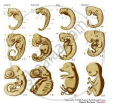Advertisements
Advertisements
प्रश्न
Appendix : vestigial organ : : Peripatus : ____________
उत्तर
Appendix : vestigial organ : : Peripatus : Connecting Link
APPEARS IN
संबंधित प्रश्न
State the connecting links between Peripatus with Annelida and Arthopoda.
(a) Select the homologous structures from the combinations given below:
(i) Forelimbs of whales and bats
(ii) Tuber of potato and sweet potato
(iii) Eyes of octopus and mammals
(iv) Thorns of Bougainvillea and tendrils of Cucurbita
(b) State the kind of evolution they represent.
Study the following statements:-
I. Wings of birds and wings of bats are homologous organs.
II. Wings of birds and wings of insects are modified forelimbs.
III. Wings of birds and wings of insects are analogous organs.
IV. Wings of birds and forelimbs of horse are homologous organs.
The correct statements are
(A) I and II
(B) II and III
(C) III and IV
(D) I and IV
If you are asked to select a group of two vegetables, out of the following, having homologous structures which one would you select?
(a) Carrot and radish
(b) Potato and sweet potato
(c) Potato and tomato
(d) Lady finger and potato
Explain the terms analogous and homologous organs with examples.
Give the importance of fossil in support of organic evolution
How do homologous organs help in providing evidence for organic evolution?
Human tailbone is a vestigial organ. Explain.
Differentiate between analogous and homologous structures.
One pair of organs in the following animals are not homologous. This is :
(a) forelimbs in humans and lizard
(b) forelimbs in lizard and frog
(c) wings in butterfly and bat
(d) wings in bat and bird
The organs P and Q of two animals have different structures but similar functions. On the other hand, the two organs R and S of two other animals have the same basic structure but different functions.
(a) What are the organs like P and Q known as?
(b) Name the organs like P and Q. Also name the animals which have such organs.
(c) What are the organs like R and S called?
(d) Name the organs like R and S. Also name the animals which have such organs.
Identify the following pairs as homologous and analogous organs:
(i) Sweet potato and potato
(ii) Eye of octopus and eye of mammals
(iii) Thorns of Bougainvillaea and tendrils of Cucurbits
(iv) Fore limbs of bat and whale
Explain with suitable examples importance of anatomical evidence in evolution.
Observe the picture and answer the following questions.
A) Which evidence of evolution is shown in the picture?
B) What can be proven with this proof?
C) Give one more example of evidence of evolution
Explain any three molecular (genetic) evidences in favour of organic evolution.
Very short answer question.
What are homologous organs?
Long answer question.
Would you consider wings of butterfly and bat as homologous or analogous and why?
Find an odd one out.
Give scientific reason.
Vertebrates have slowly originated from invertebrates.
Complete the flowchart.

Enlist the evidences of evolution.
Homologous organs and vestigial organs are examples of ______ type of evidence in evolution.
Select the CORRECT match.
Select the CORRECT set of homologous organs.
Evolution has exhibited a greater stability of molecular structure when compared with morphological structures. Comment on the statement and justify your opinion.
Cucurbits do not develop thick and woody stem as they are:
Study of fossils is ______.
Which is not a vestigial organ in a man?
Organs having similar functions but different origin and development are known as:
Which of the following is used as an atmospheric pollution indicator?
Fossils are generally found in ______.
Did aquatic life forms get fossilised? If, yes where do we come across such fossils?
How do we compute the age of a living tree?
While creation and presence of variation is directionless, natural selection is directional as it is in the context of adaptation. Comment.
What is the function of the appendix of our digestive system?
Write a note on the significance of Palaeontology.
Industrial melanism in England after 1850 is an excellent example of Natural selection. Explain how?
Write names of some vestigial organs in the human body.
